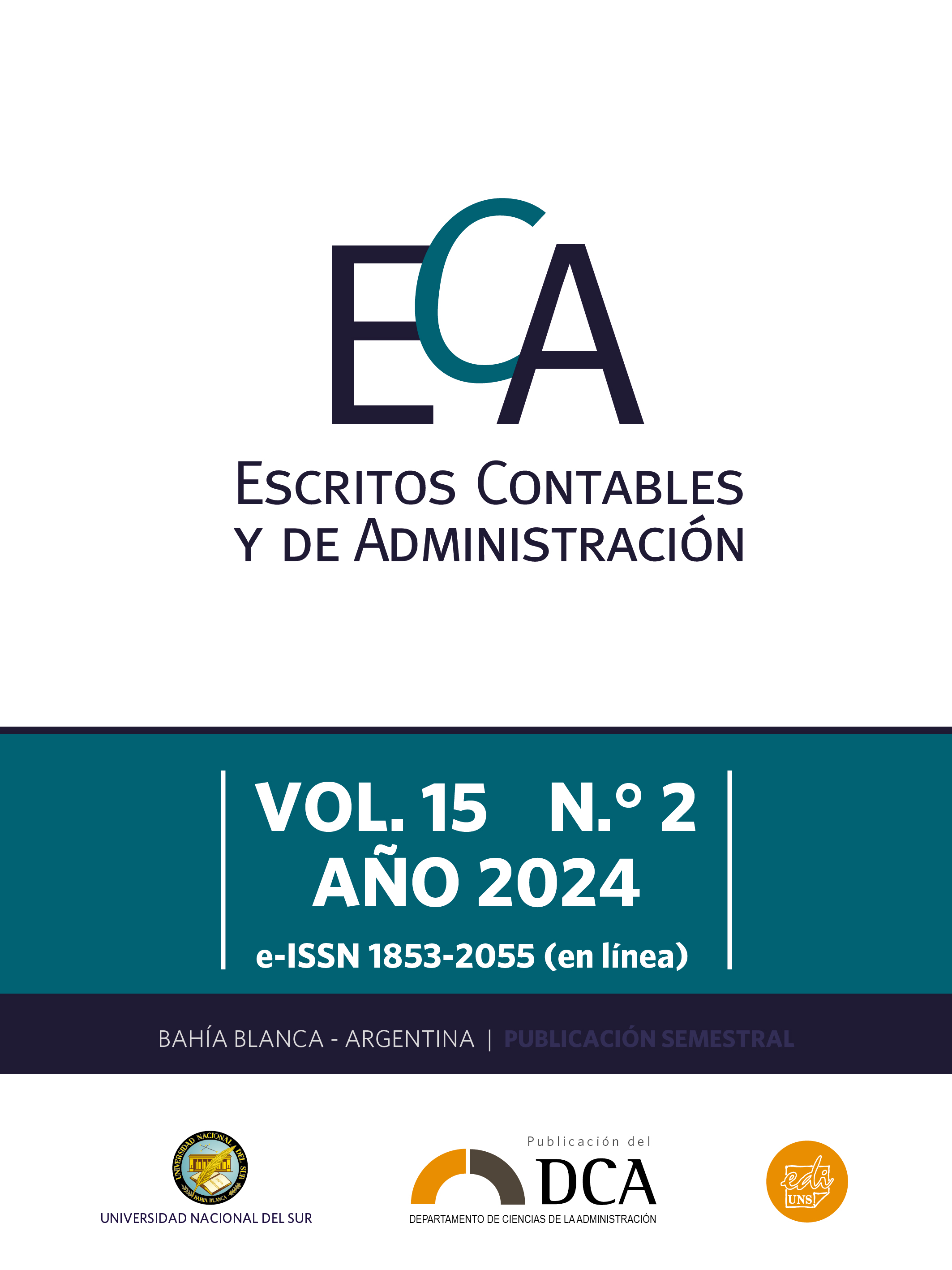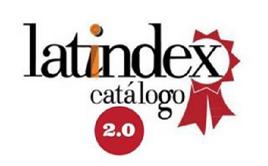The GPT chat in the teaching and learning process: villain or ally?
DOI:
https://doi.org/10.52292/j.eca.2024.4606Keywords:
ChatGPT, artificial intelligence, teaching and learning, university teachers, studentsAbstract
This research aimed to analyze the perception of the use of ChatGPT® in teaching and learning processes in engineering courses at Universidade Estadual de Minas Gerais (UEMG) – Campus Divinópolis – Minas Gerais (Brazil). They study employed a descriptive and qualitative study, using semi-structured interviews with teachers and students. The results highlighted several positive aspects, including ease of access to information, time savings, accurate and quick responses, simplification and agility of tasks, with feedback throu ghout the learning process. However, limitations were also identified, such as the lack of source of information, the negative impact on education due to plagiarism, issues with resolving calculations, difficulties with more detailed languages and codes, superficial results, inconsistencies in complex subjects and outdated information. For future research, it is suggested to increase the number of observations across different courses, conduct more statistical studies, and deepen the analysis of the various aspects of the tool to evaluate the benefits of future updates.
Downloads
References
Baker, T., Smith, L., e Anissa, N. (2019). Educ-AI-tion Rebooted? Exploring the future of artificial intelligence in schools and colleges. Nesta. https://media.nesta.org.uk/documents/Future_of_AI_and_education_v5_WEB.pdf
Bardin, L. (2016). Análise de conteúdo. Edições 70.
Bates, A. W. (2015). Teaching in a digital age: Guidelines for designing teaching and learning. Tony Bates Associates Ltd. https://openlibrary-repo.ecampusontario.ca/jspui/handle/123456789/276
Biswas, S. (2023). Role of ChatGPT in Education. SSRN. https://papers.ssrn.com/abstract=4369981
Blikstein, P., e Blikstein, I. (2021). Do educational technologies have politics? A semiotic analysis of the discourse of educational technologies and artificial intelligence in education. Em M. Ito, R. Cross, K. Dinakar, e C. Odgers (Eds.), Algorithmic Rights and Protections for Children. The MIT Press. https://doi.org/10.1162/ba67f642.646d0673
Borji, A. (2023). A categorical archive of ChatGPT failures. arxiv.org. https://doi.org/10.48550/arXiv.2302.03494
Brown, T., Mann, B., Ryder, N., Subbiah, M., Kaplan, J. D., Dhariwal, P., Nee lakantan, A., Shyam, P., Sastry, G., Askell, A., Agarwal, S., Herbert-Voss, A., Krueger, G., Henighan, T., Child, R., Ramesh, A., Ziegler, D., Wu, J., Winter, C., ..., e Amodei, D. (2020). Language models are few-shot learners. Em H. Larochelle, M. Ranzato, R. Hadsell, M. F. Balcan, e H. Lin (Eds.), Advances in neural information processing systems 33 (pp. 1877-1901). Neural Information Processing Systems Foundation. https://proceedings.neurips.cc/paper/2020/hash/1457c0d6bfcb4967418bfb8ac142f64a-Abstract.html
Cardin, V. S. G., e Oliveira-Wolowski, M. R. (2021). Implicações jurídicas do uso da inteligência artificial no processo educacional: pode a máquina substituir um professor humano? Revista Jurídica, 1(63), 198-220. http://dx.doi.org/10.26668/revistajur.2316-753X.v1i63.5139
Celik, I., Dindar, M., Muukkonen, H., e Järvelä, S. (2022). The promises and challenges of artificial intelligence for teachers: A systematic review of research. TechTrends, 66(4), 616-630. https://doi.org/10.1007/s11528-02200715-y
Collis, J., e Hussey, R. (2005). Pesquisa em administração: um guia prático para alunos de graduação e pós-graduação. Bookman.
Da Silva, V. L. (2023). Ética e responsabilidade na era da inteligência artificial: Aprendizagem digital no ChatGPT [Monografia de especialização, Universidade Federal do Pampa/UAB - Universidade Aberta do Brasil]. https://repositorio.unipampa.edu.br/jspui/handle/riu/8334
Deng, L. (2019). Deep Learning: Methods and Applications. Springer.
Dicheva, D., Dichev, C., Agre, G., & Angelova, G. (2015). Gamification in Education: A Systematic Mapping Study. Educational Technology & Society, 18(3), 75–88. https://doi.org/10.1109/EDUCON.2014.6826129
Dos Santos, A. A., Lucio, E. O. L., Barbosa, V. G., Barreto, M. S., Alberti, R., Da Silva, J. A., Joerke, G. A. O, Placido, R. L., Placido, I. T. M. P., e Saraiva, M. D. S. G. (2023). A aplicação da inteligência artificial (ia) na educação e suas tendências atuais. Cuadernos de Educación y Desarrollo, 15(2), 1155-1172. https://doi.org/10.55905/cuadv15n2-011
Dos Santos, L. A., Zimmermann, J. A. T., e Guimarães, U. A. (2022). A inteligência artificial na educação. RECIMA21 Revista Científica Multidisciplinar, 3(7), Articulo e371714-e371714. https://doi.org/10.47820/recima21.v3i7.1714
Farré, D. (2023). Inteligencia artificial generativa en docencia universitaria: Caso de aplicación como técnica didáctica [Apresentação]. XLVI Congreso Argentino de Profesores Universitarios de Costos. Córdoba, Argentina. https://iapuco.org.ar/wp-content/uploads/2023/09/Trabajo-19-completo.pdf
Flusser, V. (2005). Para uma escola do futuro. Revista FACOM, (15), 4-7. https://www.faap.br/revista_faap/revista_facom/facom_15/_flusser.pdf
Gallo, S. M. L. (2023). ChatGPT: hiperautor ou não autor? Traços de Linguagem Revista de Estudos Linguísticos, 7(1), 84-95. https://doi.org/10.30681/2594.9063.2023v7n1id11199
Garcia, A. C. B. (2020). Ética e inteligência artificial. Computação Brasil, (43), 14-22. https://doi.org/10.5753/compbr.2020.43.1791
Halverson, E. R., e Sheridan, K. (2014). The maker movement in education. Harvard Educational Review, 84(4), 495-504. https://doi.org/10.17763/haer.84.4.34j1g68140382063
Hassabis, D., Kumaran, D., Summerfield, C., e Botvinick, M. (2017). Neuroscience-inspired artificial intelligence. Neuron, 95(2), 245-258. https://doi.org/10.1016/j.neuron.2017.06.011
Kerckhove, D. D. (2003). A arquitetura da inteligência: Interfaces do corpo, da mente e do mundo. Em D. Domingues (Org.), Arte e vida no século XXI-tecnologia, ciência e criatividade (pp. 15-36). Editora UNESP.
Kumar, J. A. (2021). Educational chatbots for project-based learning: Investigating learning outcomes for a team based design course. International Journal of Educational Technology in Higher Education, 18(1), 1-28. https://doi.org/10.1186/s41239-021-00302-w
Lobo, L. C. (2018). Inteligência artificial, o futuro da medicina e a educação médica. Revista Brasileira de Educação Médica, 42(3), 3-8. https://doi.org/10.1590/1981-52712015v42n3RB20180115EDITORIAL1
Olite, F. M. D., Suárez, I. D. R. M., e Ledo, M. J. V. (2023). ChatGPT: origen, evolución, retos e impactos en la educación. Educación Médica Superior, 37(2), 1-5. https://ems.sld.cu/index.php/ems/article/view/3876
OpenAI. (2020). Como funciona o ChatGPT. Recuperado em 30 de janeiro de 2023 de https://openai.com/chatgpt/
Ouyang, F., Zheng, L., e Jiao, P. (2022). Artificial intelligence in online higher education: A systematic review of empirical research from 2011 to 2020. Education and Information Technologies, 27(6), 7893-7925. https://doi.org/10.1007/s10639-022-10925-9
Pokhrel, S., e Chhetri, R. (2021). A literature review on impact of COVID-19 pandemic on teaching and learning. Higher Education for the Future, 8(1), 133-141. https://doi.org/10.1177/2347631120983481
Pozzebon, E., Frigo, L. B., e Bittencourt, G. (2004). Inteligência Artificial na educação universitária: quais as contribuições?. Revista do CCEI, 8(13), 33–41. http://revista.urcamp.tche.br/index.php/Revista_CCEI/issue/viewIssue/15/pdf_12
Radford, A., Narasimhan, K., Salimans, T., e Sutskever, I. (2018). Improving language understanding by generative pre-training. https://cdn.openai.com/research-covers/language-unsupervised/language_understanding_paper.pdf
Silva, J. A. S., e Mairink, C. H. P. (2019). Inteligência artificial. LIBERTAS: Revista de Ciências Sociais Aplicadas, 9(2), 64-85.
Sjöström, J., Aghaee, N., Dahlin, M., e Ågerfalk, P. J. (2018). Designing chatbots for higher education practice [Apresentação]. 2018 AIS SIGED International Conference on Information Systems Education and Research. https://aisel.aisnet.org/siged2018/4/
Tavares, L. A., Meira, M. C., e Amaral, S. F. D. (2020). Inteligência artificial na educação: Survey. Brazilian Journal of Development, 6(7), 48699-48714. https://doi.org/10.34117/bjdv6n7-496
VanLehn, K. (2011). The relative effectiveness of human tutoring, intelligent tutoring systems, and other tutoring systems. Educational Psychologist, 46(4), 197-221. https://doi.org/10.1080/00461520.2011.611369
Veiga, F., e Andrade, A. (2019). Inteligência Artificial e Educação: Uma revisão sistemática de literatura [Apresentação]. II Seminário Internacional EXPRESSA: Re-imaginar a Comunicação Científica em Educação. Porto, Portugal. http://hdl.handle.net/10400.14/38739
Vicari, R. M. (2018). Tendências em inteligência artificial na educação no período de 2017 a 2030: Sumário executivo. Serviço Nacional de Aprendizagem Industrial (SENAI). https://www2.fiescnet.com.br/web/uploads/recursos/d1dbf03635c1ad8ad3607190f17c9a19.pdf
Voogt, J., Knezek, G., Cox, M. J., Knezek, D., e Ten Brummelhuis, A. (2019). Under which conditions does ICT have a positive effect on teaching and learning? A Call to action. Journal of Computer Assisted Learning, 29(1), 4-14. https://doi.org/10.1111/j.1365-2729.2011.00453.x
Webber, C., Flores, D., e Fracasso, D. (2021). Inteligência Artificial na Escola: Rumo às Novas Experiências Computacionais. Scientia Cum Industria, 9(3), 27-32. https://sou.ucs.br/etc/revistas/index.php/scientiacumindustria/article/view/10826
Yazdani, M., e Lawler, R. W. (1986). Artificial intelligence and education: An overview. Instructional Science, 14(3), 197-206. https://www.jstor.org/stable/23369056
Published
How to Cite
Issue
Section
License
Copyright (c) 2024 Josiane Luiza da Silva, Marcelo Agenor Espíndola, Prof. Dr. Frederico Mafra

This work is licensed under a Creative Commons Attribution-NonCommercial 4.0 International License.
Aviso de derechos de autor
Aquellos autores/as que tengan publicaciones con esta revista, aceptan los términos siguientes:
- Los autores/as conservarán sus derechos de autor y garantizarán a la revista el derecho de primera publicación de su obra, el cual estará simultáneamente sujeto a la licencia Atribución-No Comercial 4.0 Internacional CC BY-NC 4.0.
- Los autores/as podrán adoptar otros acuerdos de licencia no exclusiva de distribución de la versión de la obra publicada (p. ej.: depositarla en un archivo telemático institucional o publicarla en un volumen monográfico) siempre que se indique la publicación inicial en esta revista.
- Se permite y recomienda a los autores/as difundir su obra a través de Internet (por ej.: en páginas web institucionales o personales) una vez publicado su trabajo, lo cual puede producir intercambios interesantes y aumentar las citas de la obra publicada (Véase El efecto del acceso abierto).





















